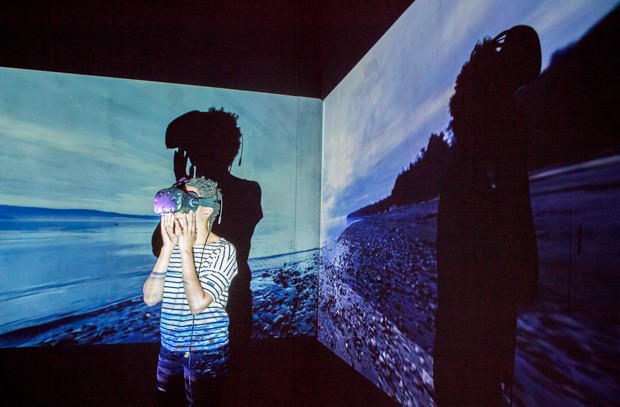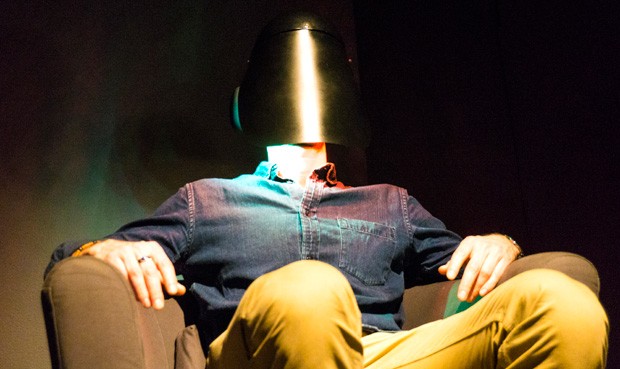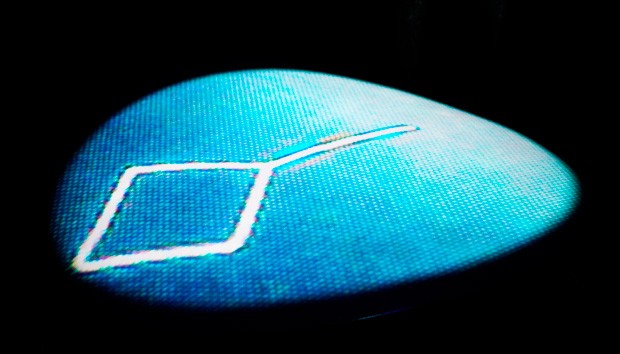11 Concordians get set to exhibit at one of the world's largest art and technology festivals
 Island by Concordia multimedia artist Olivia McGilchrist
Island by Concordia multimedia artist Olivia McGilchrist
11 Concordians are getting ready to join more than 1,000 creative minds in Linz, Austria, for one of the largest celebrations of media arts in the world — the Ars Electronica Festival.
From September 6 to 10, Hexagram will team up with the University of Art and Design Linz to feature student works at the festival’s annual Campus Exhibition. Hexagram is an interdisciplinary research network for media arts, design and technology founded by Concordia and the Université du Québec à Montréal (UQAM). Hexagram-Concordia — one of 21 Senate-recognized research units at the university — is a member.
Lorène Chesnel, communications officer for Hexagram’s Ars Electronica programming committee, notes this is the first time in the exhibition’s 16-year history that a research network will stage the exhibition.
“They’re really opening things up this year,” she says. “Our network is comprised of more than 80 faculty members and 200 graduate students from across its founding universities, as well as the Université de Montréal, McGill University and the Université du Québec à Chicoutimi.”
It’s also the first year the province of Quebec will have major institutional representation at the festival.
“For Hexagram, research-creation is our main mission — we want to export this expertise because it's unique,” Chesnel adds.
“We are the biggest network of our kind in Canada and have collaborations throughout the province, country and world.”
Research-creation refers to interdisciplinary research approaches that bridge faculty members and students from the arts, humanities, and social and natural sciences. Collaborations often occur across departments and universities.
Taking care in the technological age
A selection committee chose 20 student works from Concordia, UQAM and the Université de Montréal to exhibit in Linz. The show is one of six major segments that make up the massive five-day festival, which includes more than 500 presentations, events, concerts and performances.
The theme for Hexagram’s exhibition is Taking Care. Anna Kerekes, the network’s Ars Electronica curator, says the committee considered how each work demonstrates the diversity of research-creation practices that take place within Hexagram.
“The projects exhibited in Taking Care operate at the intersection of ethical-aesthetic concerns. They are not meant to be prescriptive, describing the good life, but rather speculative, asking about the possibilities and conditions of life in the present and future,” she explains.
Student works will include games, performances, installations, virtual reality, biological art, textiles, sound, video and photography. Each of the submissions uses contemporary technologies to explore issues that supersede the technological, from post-colonial conflict to questions of race, history and representation.
“As attention turns to the considerable uncertainty of our future, Taking Care examines what is at stake in the ideas and visions of the next generation,” says Kerekes.
 Alexandre Saunier’s Sensum is a custom helmet made of LED lights that utilizes sound, light and movement.
Alexandre Saunier’s Sensum is a custom helmet made of LED lights that utilizes sound, light and movement.
A sneak peek
Alexandre Saunier, a PhD candidate in Concordia’s Individualized program (INDI) and Hexagram’s technical director for the Ars Electronica Campus Exhibition, will showcase two of his works at the festival.
Sensum is a custom helmet made of LED lights that uses sound, light patterns, colour and movement to provide its singular audience with an immersive experience.
Vitra is an installation composed of different light sculptures generated using LED projectors. Saunier animates the lights and wants individuals to experience a range of visual effects that challenge their senses.
“Both are closely tied to my own PhD research, which is centred around light and how we might think of it in the same way we think of music — something that can be composed and performed using different rhythms, dynamics and patterns,” says Saunier.
Suzanne Kite, another PhD candidate in the INDI program, will also be heading to Linz to perform her work, Listener. A member of the Lakota tribe, Kite’s research examines how Lakota ontologies and epistemologies contribute to the creation of new artworks.
She created the iterative performance piece at Concordia in 2017 after participating in a workshop given by the Initiative for Indigenous Futures. The session tasked participants with imagining life seven generations out.
“It was very challenging to imagine a future so far removed from myself and my people,” recalls Kite. “I generated a lot of ideas and turned them all into Listener.”
Listener is a 28-minute performance that takes place in a black box. The work acts as a slice of a longer science fiction narrative that imagines a diasporic Lakota wanderer, known only as the Listener, navigating a post-apocalyptic terrain. The performance system consists of a hair-braid interface with computational media, video, audio, sculpture, garment and text.
“I'm speaking, moving through space, and interacting with sound and video. My goal was to make a circular performance,” says Kite.
“I've never shown work in Europe before. What it means to show work indigenous to the Americas in a European setting is a relationship I’m still trying to figure out. I hope it will be interesting.”
 Suzanne Kite will also be heading to Linz to perform her work, Listener.
Suzanne Kite will also be heading to Linz to perform her work, Listener.
Bringing Canadian-style research creation to Europe
Kerekes and Chesnel both emphasize that the exhibited projects will exemplify research-creation, an approach where there are considerable theoretical and methodological differences between Canada and Europe.
“Hexagram has been a leading force concerning this type of research, which represents a new trend in the academic milieu here in Quebec and Canada,” says Chesnel.
Saunier notes that Montreal is renowned internationally for its research-creation and credits Hexagram for contributing to the city’s success.
“It’s not only about showing my work in the exhibition, but also that it exists within an ecosystem,” he says.
“Even if the student works are totally diverse, they’re all related to one another. They rely on research-creation and an environment in which people can share and experiment, while keeping one foot in the art world and the other in academia.”
Other Concordia works that will exhibit in Linz include: Sola by Agustina Isidori, Maxwell’s Equations by Barbara Layne & Lauren Osmond, Drone by Donna Marie Legault, Promises by Ida Toft, Rustle your leaves to me softly by Jess Marcotte & Dietrich Squinkifer, Island by Olivia McGilchrist, Of the soone by Sofian Audry & Erin Gee, and Aseptic Requiem by WhiteFeather Hunter.
Recognition for research communities
Concordia-based research-creation network Aboriginal Territories in Cyberspace (AbTeC) received an honourable mention in the Digital Communities category of this year's Prix Ars Electronica. Co-founded and co-directed by Jason Edward Lewis and Skawennati, the community's goal is to ensure an Indigenous presence in cyberspace.
Concordia design student Lucas Larochelle also received an honourable mention in the same awards category for his project, Queering the Map. LaRochelle launched the digital project in May 2017 to document the diversity and history of queer space. It eventually went viral, attracting more than 10,000 shares on Facebook and 6,000 new submissions over three days.
Learn more about Hexagram's Taking Care exhibition and Concordia’s Research units, including Hexagram-Concordia.


